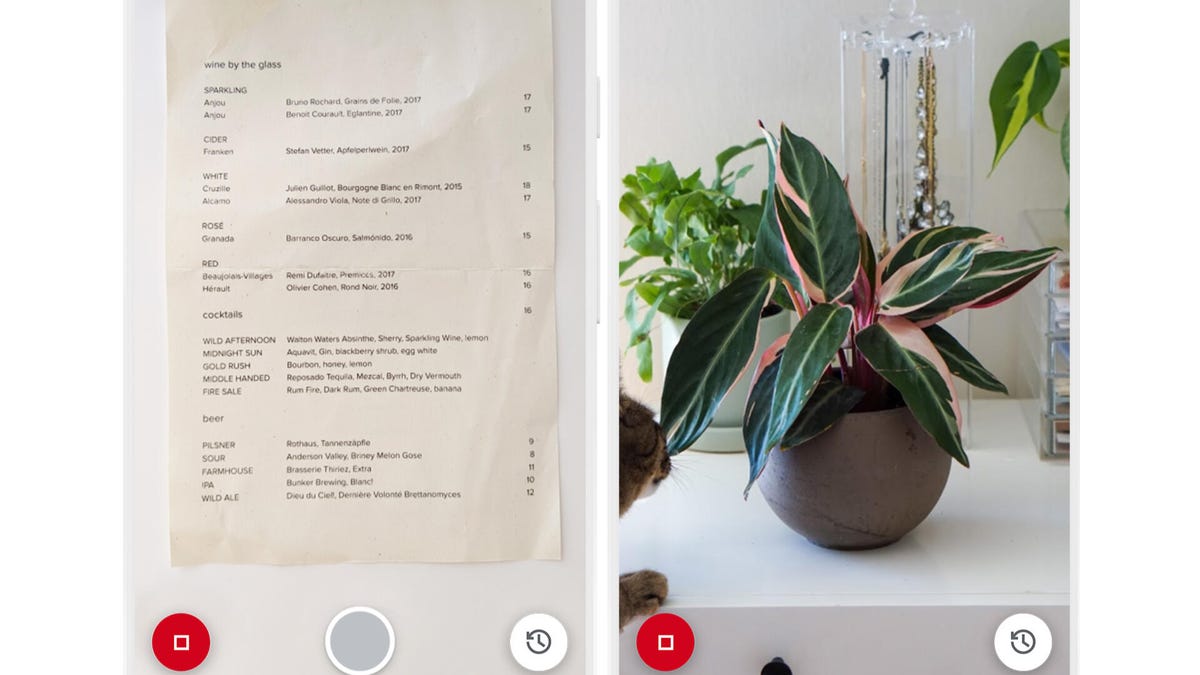Google expands Lookout app for people who are blind or vision-impaired
The app now works on more Android devices and offers new features and a simpler design.

Lookout uses computer vision to help people who are blind or low-vision explore their surroundings and get things done.
Google on Tuesday expanded its Lookout app, designed for people who are blind or low-vision, to more Android devices. The search giant also added two new modes, allowing users to identify food labels and to scan documents, and rolled out a more accessible design for the app. Released in March 2019, Lookout was previously available only on Pixel. Google also rolled out several other new features for Android.
With the Food Label mode, Lookout can identify packaged foods when users point their phone's camera at a label. If they're aiming the camera at the wrong spot, the app will tell them to move the product until either the front of the item or the barcode is clearly showing.
Lookout's Food Label mode in action.
The Scan Document mode is designed to make it easier to go through letters and mail. People can use Lookout to take a snapshot of a document, and the app will then gather the document's content and make it available to be read aloud by a screen reader.
Google is also launching a more accessible design for Lookout that's more compatible with TalkBack, its Android screen reader. Changes include providing more space for the camera view so it's easier to frame an object, as well as simplifying navigation by letting users scroll between modes at the bottom of the screen.
Lookout is now available on all devices with more than 2GB of RAM running Android 6.0 and later. The app also now works in Spanish, French, German and Italian. Other modes of the app include Quick Read, which can read aloud short text on items such as flyers and signs; a Currency option, which identifies US dollars and bill amounts; and Explore, which can identify objects around a room, such as a table or bed when pointing the phone's camera.
Tech companies throughout Silicon Valley have been working to boost accessibility across their products as organizations shed light on the many disparities that exist for millions of people around the world. In May, Google rolled out a series of updates to Maps, Live Transcribe and Sound Amplifier aimed at improving user accessibility. The search giant is also collecting voice samples of people with Down syndrome to improve its Google Assistant technology. Last month, fellow tech giant Facebook unveiled a new set of features designed to improve accessibility on its site, including scalable font sizes and screen reader announcements that inform users when an action or post is successful.
This year marks the 30th anniversary of the Americans with Disabilities Act. Events like the annual Global Accessibility Awareness Day, which this year took place May 21, aim to promote digital accessibility and inclusion throughout the industry.
More updates to Android
Google released several other Android updates, including earthquake alerts powered by ShakeAlert to devices in California. Android phones around the world running Android 5.0 and above will now also be able to detect earthquakes with the Android Earthquake Alerts System, creating what Google calls the "world's largest earthquake detection network." This will contribute to faster, more accurate information when users look up "earthquake near me" in Search. Google says over the coming year, more states and countries will get earthquake alerts through Android's phone-based detection, giving people a heads-up to find cover and safety.
Earthquake alerts are coming to Android phone users in California, before expanding to more states and cities over the coming year, Google says.
Additionally, through Android Emergency Location Service (ELS), which launched in 2016 to help shorten emergency response times by sharing accurate location information, Android phones can now share someone's device language setting when they call their local emergency number. That means that where ELS is available, if someone doesn't speak the local language, emergency operators will quickly know to get the necessary translator in order to send help sooner.
Updates to Android Auto allow users to quickly glance at their schedule on their car display using the new calendar app, and they can tap on a calendar event to get directions to or call a listed location. The new app rolls out to devices running Android 6.0 and above over the coming month. The revamped settings app also allows users to manage their Android Auto preferences from their car display.
Lastly, Google is adding the Bedtime tab in Clock for all devices running Android 6.0 and above. The feature, which was previously available on Pixel phones, is designed to help users keep a consistent sleep schedule and limit screen time by reminding them when it's time for bed and silencing notifications.

